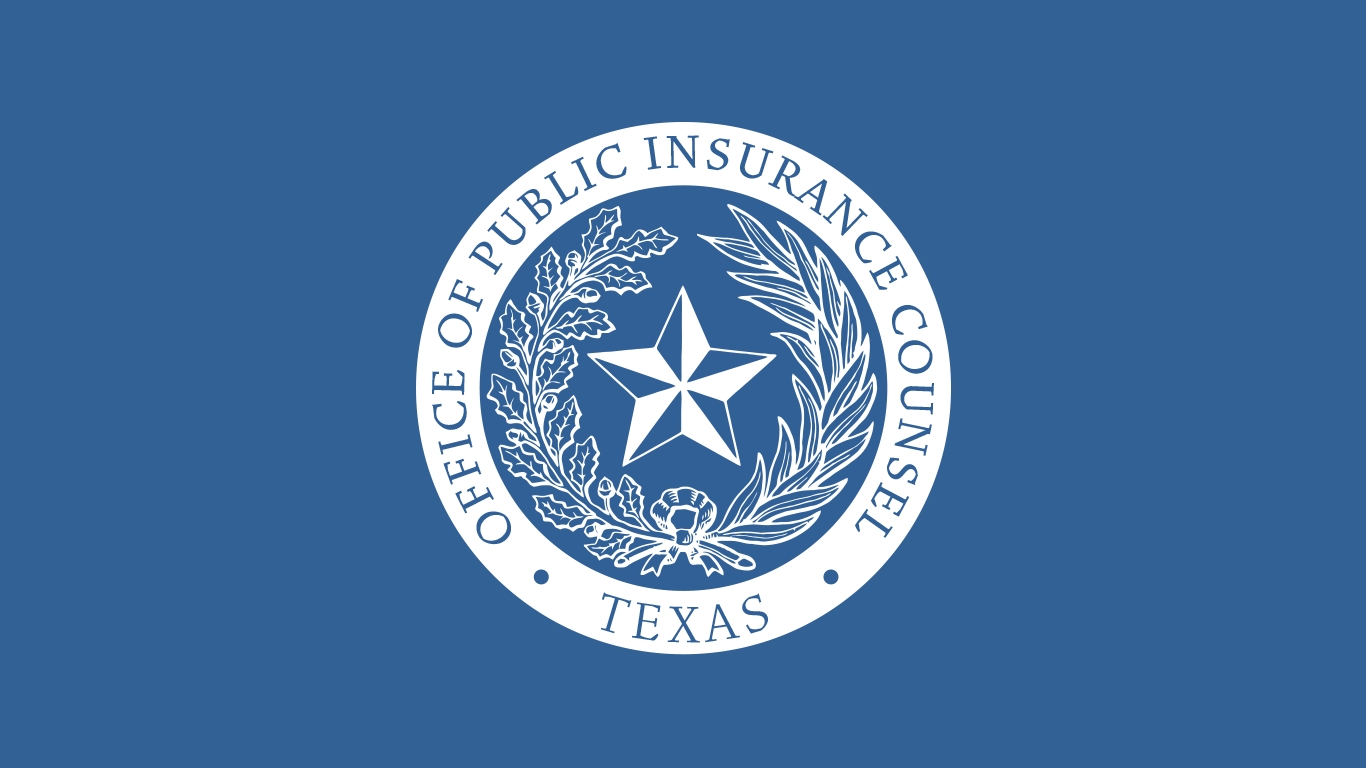Home>Finance>What Is The Normal Grace Period For A Property Insurance Policy In California?


Finance
What Is The Normal Grace Period For A Property Insurance Policy In California?
Published: February 20, 2024
In California, property insurance policies typically have a grace period of 30 days, providing financial flexibility for policyholders. Understand the finance aspect of property insurance grace periods.
(Many of the links in this article redirect to a specific reviewed product. Your purchase of these products through affiliate links helps to generate commission for LiveWell, at no extra cost. Learn more)
Table of Contents
- Understanding the Importance of Grace Periods in Property Insurance Policies
- The Buffer Between Premium Due Dates and Lapse in Coverage
- Navigating the Diverse Landscape of Property Insurance in the Golden State
- Understanding the Timelines and Implications of Grace Periods in California
- Empowering Policyholders with Financial Resilience and Proactive Management
- Navigating the Dynamics of Grace Periods for Enhanced Financial Security
Introduction
Understanding the Importance of Grace Periods in Property Insurance Policies
Property insurance serves as a safeguard against unforeseen events that could potentially lead to financial loss for homeowners and property owners. In the state of California, where a diverse range of properties, from suburban homes to bustling commercial establishments, dot the landscape, understanding the nuances of property insurance policies is paramount. One crucial aspect of these policies is the grace period, which plays a pivotal role in ensuring continuous coverage and financial security.
The concept of a grace period in the context of insurance is relatively straightforward, yet its implications are profound. Essentially, a grace period refers to the specified duration after the premium due date during which the policyholder can make a payment without facing a lapse in coverage. This period acts as a buffer, offering a degree of leniency to policyholders who encounter temporary financial constraints or oversight in making timely payments.
Within the realm of property insurance, the grace period assumes heightened significance due to the substantial financial stakes associated with real estate and personal property. Whether it's protection against natural disasters, theft, or liability claims, property insurance serves as a crucial safety net. Therefore, comprehending the dynamics of the grace period is instrumental in ensuring that this safety net remains intact.
In this article, we will delve into the intricacies of grace periods within property insurance policies in California. By shedding light on the normal grace period for such policies and elucidating its implications, we aim to empower property owners with the knowledge necessary to navigate the realm of insurance with confidence and prudence. Understanding the normal grace period for property insurance policies in California is not only a matter of compliance with regulations but also a means of fortifying one's financial resilience in the face of unforeseen adversities.
Understanding Grace Periods
The Buffer Between Premium Due Dates and Lapse in Coverage
Grace periods in insurance policies serve as a crucial buffer, offering policyholders a window of time beyond the premium due date to make their payments without facing immediate repercussions. This period is designed to accommodate temporary financial constraints or oversights, providing a degree of leniency to policyholders while ensuring continuous coverage.
One of the key aspects to understand about grace periods is that they vary depending on the type of insurance and the regulations set forth by individual states. While some states have standard grace periods mandated by law, others may allow insurance companies to set their own grace periods within certain parameters. It is important for policyholders to familiarize themselves with the specific grace period stipulations outlined in their insurance policies to avoid any misunderstandings or unintended lapses in coverage.
During the grace period, the insurance policy remains in force, and the policyholder continues to enjoy the benefits and protections outlined in the policy. However, it is crucial to note that any claims made during the grace period, especially before the premium is paid, may be subject to review by the insurance company. Additionally, if the premium remains unpaid by the end of the grace period, the policy may lapse, leaving the policyholder without coverage.
Understanding the nuances of grace periods is essential for policyholders to effectively manage their insurance obligations and avoid potential gaps in coverage. By staying informed about the duration of the grace period and the implications of late payments, policyholders can take proactive measures to ensure continuous coverage and financial security.
Grace periods also underscore the importance of clear communication between insurance companies and policyholders. In the event of financial challenges that may affect premium payments, policyholders are encouraged to communicate with their insurance providers to explore potential solutions or alternative arrangements. Open dialogue and proactive engagement can often lead to mutually beneficial resolutions that help policyholders maintain their coverage without undue stress or uncertainty.
Property Insurance Policies in California
Navigating the Diverse Landscape of Property Insurance in the Golden State
California, renowned for its stunning coastline, diverse metropolitan areas, and expansive rural regions, boasts a rich tapestry of properties ranging from beachfront homes to sprawling vineyards and bustling commercial enterprises. In this dynamic landscape, the need for comprehensive property insurance policies is paramount, given the array of potential risks and perils that property owners may face.
Property insurance in California encompasses a broad spectrum of coverage options tailored to address the unique needs and challenges associated with various types of properties. Homeowners insurance, which provides protection for residential properties against perils such as fire, theft, and liability claims, is a fundamental component of property insurance in the state. Additionally, commercial property insurance caters to the distinct risk exposures faced by businesses, safeguarding their physical assets and mitigating potential liabilities.
California’s propensity for natural disasters, including wildfires, earthquakes, and floods, further underscores the significance of robust property insurance coverage. Given the heightened risk of such catastrophic events, property owners in California must ensure that their insurance policies provide adequate protection against these perils, taking into account the potential impact on their properties and financial well-being.
Moreover, property insurance policies in California are subject to state regulations that govern various aspects, including policy terms, coverage requirements, and, notably, grace periods. These regulations aim to uphold consumer protections and ensure that policyholders are equipped with the necessary safeguards and information to make informed decisions about their insurance coverage.
As property insurance policies in California are tailored to address the specific needs and risks prevalent in the state, it is imperative for property owners to engage with reputable insurance providers that understand the nuances of the local market. By partnering with insurers well-versed in California’s insurance landscape, property owners can access tailored coverage options and expert guidance to navigate the intricacies of property insurance with confidence.
Normal Grace Period for Property Insurance Policies
Understanding the Timelines and Implications of Grace Periods in California
In California, the normal grace period for property insurance policies serves as a crucial timeframe within which policyholders can ensure the continuity of their coverage. The state’s insurance regulations stipulate specific guidelines regarding grace periods, offering clarity and protection for policyholders while delineating the responsibilities of insurance companies.
For property insurance policies in California, the standard grace period typically ranges from 10 to 30 days. This timeframe allows policyholders to submit their premium payments after the due date without facing an immediate lapse in coverage. It is important for policyholders to refer to their individual insurance policies to ascertain the exact duration of the grace period, as it may vary based on the terms and conditions outlined in the policy.
Understanding the normal grace period for property insurance policies is essential for policyholders to effectively manage their financial obligations and maintain continuous coverage. By adhering to the timelines delineated in their policies, policyholders can mitigate the risk of potential lapses in coverage and the associated financial vulnerabilities.
Moreover, the normal grace period for property insurance policies underscores the importance of timely communication between policyholders and their insurance providers. In the event of unforeseen circumstances that may impact the ability to make timely premium payments, proactive dialogue with the insurance company can often lead to mutually beneficial solutions that help maintain coverage without disruptions.
It is crucial for policyholders to remain vigilant about the timelines associated with the grace period and to proactively address any challenges that may arise in meeting their financial obligations. By doing so, they can uphold the integrity of their insurance coverage and fortify their resilience against potential risks and uncertainties.
Ultimately, the normal grace period for property insurance policies in California represents a vital mechanism designed to balance the responsibilities of policyholders and insurance companies, ensuring that coverage remains intact while acknowledging the practical realities that may affect premium payments.
Importance of Understanding the Grace Period
Empowering Policyholders with Financial Resilience and Proactive Management
Comprehending the nuances of the grace period within property insurance policies is of paramount importance for policyholders in California. This understanding empowers policyholders to navigate their insurance obligations with prudence and foresight, thereby fortifying their financial resilience and mitigating potential risks associated with coverage lapses.
One of the primary reasons why understanding the grace period is crucial lies in its direct impact on the continuity of insurance coverage. By being aware of the specific grace period outlined in their insurance policies, policyholders can effectively manage their premium payments and ensure that their coverage remains uninterrupted. This proactive approach reduces the likelihood of gaps in coverage that could leave property owners vulnerable to financial losses resulting from unforeseen perils or liabilities.
Furthermore, understanding the grace period fosters a sense of financial responsibility and accountability among policyholders. By recognizing the timelines and implications associated with the grace period, policyholders are prompted to prioritize their premium payments and engage with their insurance providers proactively. This mindset not only contributes to the stability of their insurance coverage but also cultivates a disciplined approach to managing their financial obligations.
Moreover, the importance of understanding the grace period extends to the realm of risk management and preparedness. Property owners in California are exposed to a myriad of potential perils, including natural disasters, property damage, and liability claims. By comprehending the grace period and its role in maintaining continuous coverage, policyholders can take proactive measures to safeguard their properties and financial well-being, thereby bolstering their overall resilience in the face of uncertainties.
Additionally, understanding the grace period facilitates constructive communication between policyholders and insurance providers. In instances where temporary financial challenges may affect premium payments, being well-informed about the grace period allows policyholders to engage with their insurers transparently and explore viable solutions that align with their financial circumstances. This collaborative approach often leads to mutually beneficial arrangements that help policyholders maintain their coverage without undue stress or uncertainty.
Ultimately, the importance of understanding the grace period within property insurance policies in California transcends mere compliance with regulatory guidelines; it embodies a proactive and informed approach to managing one’s insurance obligations, fostering financial resilience, and mitigating potential vulnerabilities.
Conclusion
Navigating the Dynamics of Grace Periods for Enhanced Financial Security
As property owners in California traverse the intricate landscape of insurance, understanding the nuances of grace periods within property insurance policies emerges as a pivotal element in fortifying their financial security and resilience. The grace period serves as a crucial buffer, offering policyholders a window of opportunity to manage their premium payments and ensure the continuity of their coverage.
By comprehending the normal grace period for property insurance policies, which typically ranges from 10 to 30 days in California, policyholders can proactively manage their financial obligations and mitigate the risk of potential lapses in coverage. This understanding empowers them to prioritize their premium payments and engage with their insurance providers in a transparent and proactive manner, fostering a disciplined approach to managing their insurance obligations.
Moreover, the significance of understanding the grace period extends beyond mere compliance with regulatory guidelines; it embodies a proactive and informed stance toward risk management and preparedness. Property owners equipped with this understanding are better positioned to navigate the diverse perils and uncertainties that may impact their properties, thereby bolstering their overall resilience and financial well-being.
Clear communication between policyholders and insurance providers during challenging circumstances further underscores the importance of understanding the grace period. This open dialogue often leads to mutually beneficial solutions that help policyholders maintain their coverage without undue stress or uncertainty, fostering a collaborative and supportive relationship between the parties involved.
In essence, the normal grace period for property insurance policies in California serves as a mechanism that balances the responsibilities of policyholders and insurance companies, ensuring that coverage remains intact while acknowledging the practical realities that may affect premium payments. By embracing this understanding and proactively managing their insurance obligations, property owners in California can navigate the realm of insurance with confidence, prudence, and a steadfast commitment to safeguarding their financial security.














